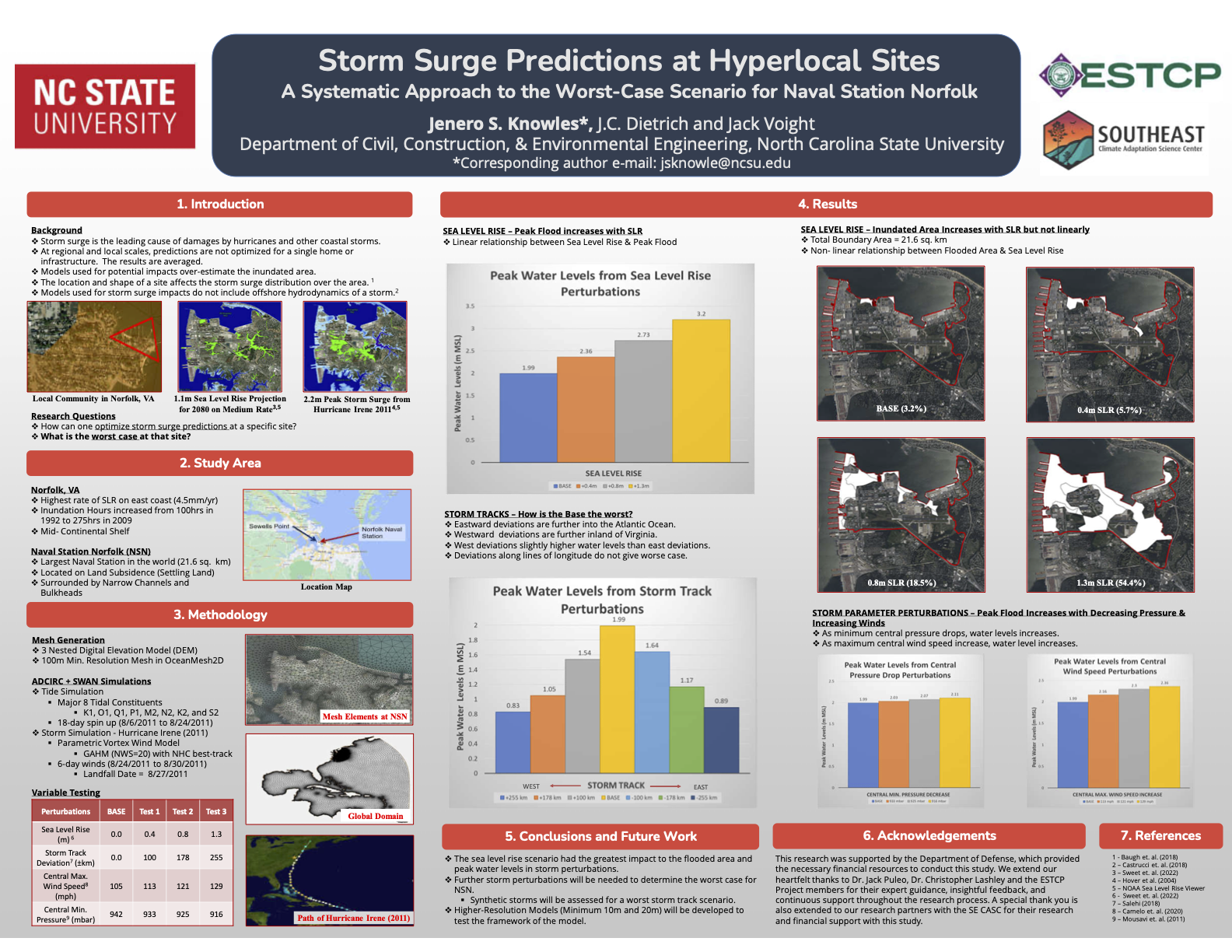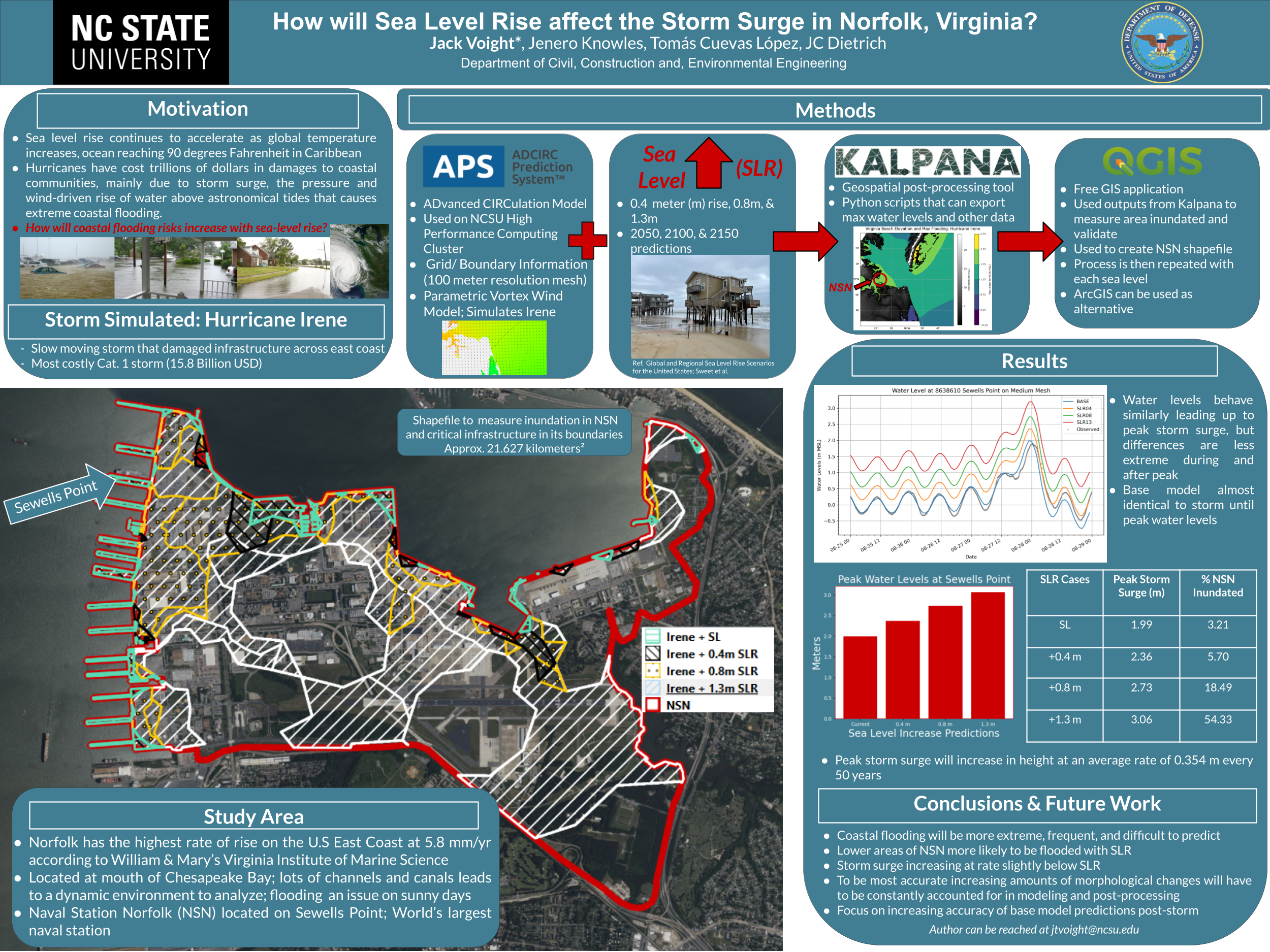Category Archives: Models
North Carolina Center for Coastal Algae, People, and Environment
A Schnetzer, SM Belcher, BB Cutts, DR Obenour, T Ben-Horin, JC Dietrich, C Hoyo, NG Nelson, R Paerl. “North Carolina Center for Coastal Algae, People, and Environment (NC C-CAPE).” National Institutes of Health, National Institute of Environmental Health Sciences, Centers for Oceans and Human Health 4: Impacts of Climate Change on Oceans and Great Lakes, 2024/02/01 to 2029/01/31, $6,913,382 (Dietrich: $467,482).
Seminar: EWC
Conferences: Fall 2023
Poster: Fall 2023 Conferences

Storm Surge Predictions at Hyperlocal Sites
Efficiency Gains for Spectral Wave Models in Coupled Frameworks
Thus, there are remaining research questions related to how to improve the performance of a spectral wave model in a coupled modeling framework. What are the tradeoffs when a spectral wave model is nested nearshore and receives boundary conditions from other sources? Over what period should the spectral wave model simulate as a storm approaches a coast? Can this research lead to guidance or best practices for coupled modeling applications? This project will focus on the Simulating WAves Nearshore (SWAN) model and SWAN+ADCIRC framework, but the project findings will be transferable to other spectral wave models and frameworks. We aim to improve the ability to nest spectral wave models in both space and time, via modernization of boundary conditions and a coupled model controller, and thus improve computational efficiency.
JC Dietrich. “Efficiency gains for spectral wave models in coupled frameworks.” Department of Defense, Broad Agency Announcement, Engineer Research and Development Center, Coastal Hydraulics Laboratory, 2023/09/22 to 2025/09/21, $191,353 (Dietrich: $191,353).


